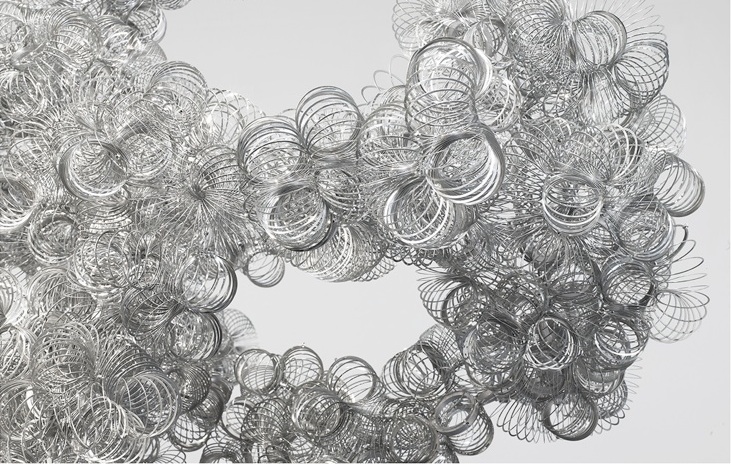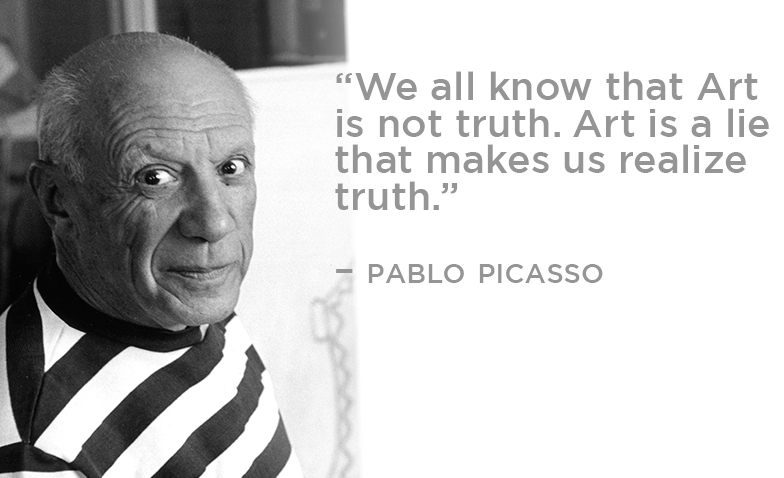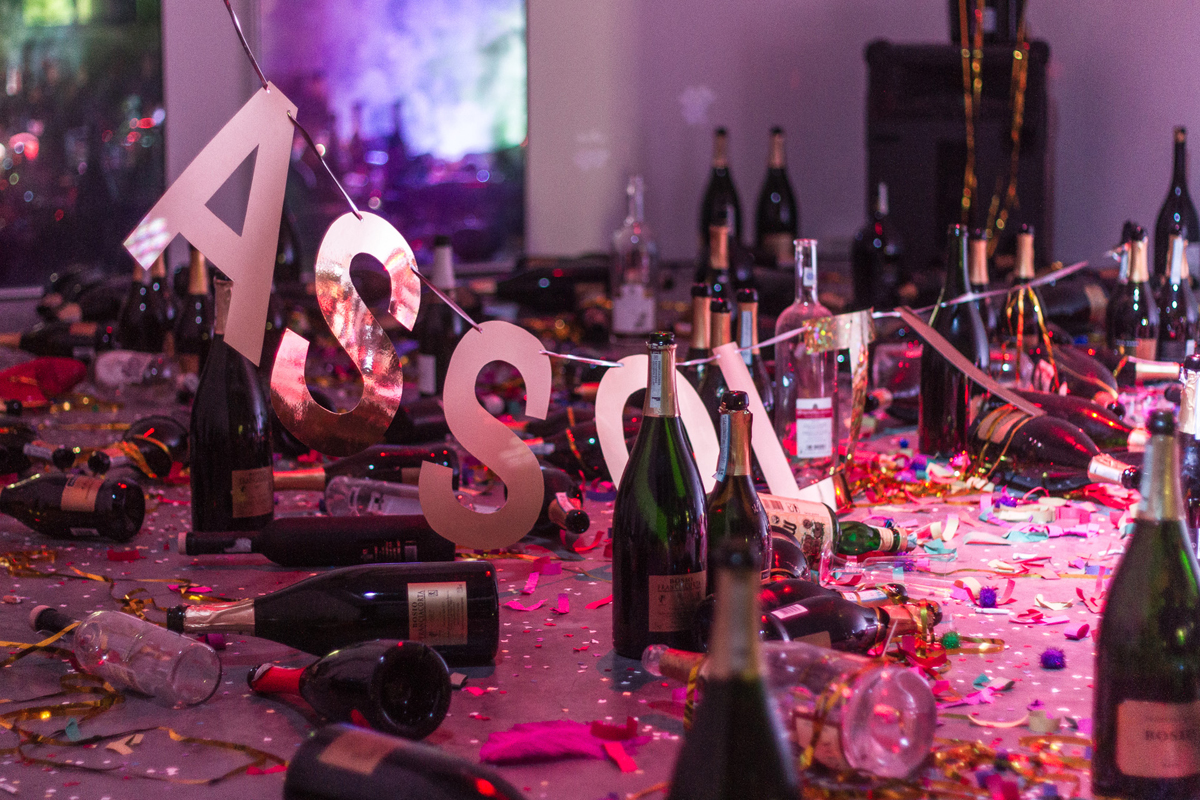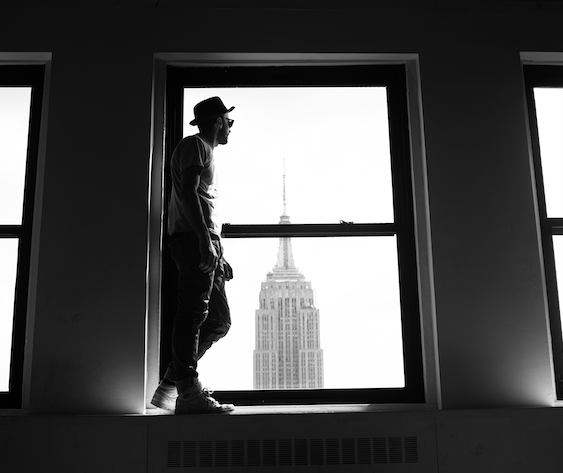There is an incredible amount of thought provoking art created annually and 2015 was no different. Perhaps because of where we’re at as a culture, many of the works we found the most fascinating this year touched on the concepts of gender and sexuality or utilized new or repurposed technology. So, in case you missed them the first time around (or want to learn more), check out some of this year’s most intriguing, inspiring, and provocative works of art.
Daniel Rozin’s Digital Penguin Mirror
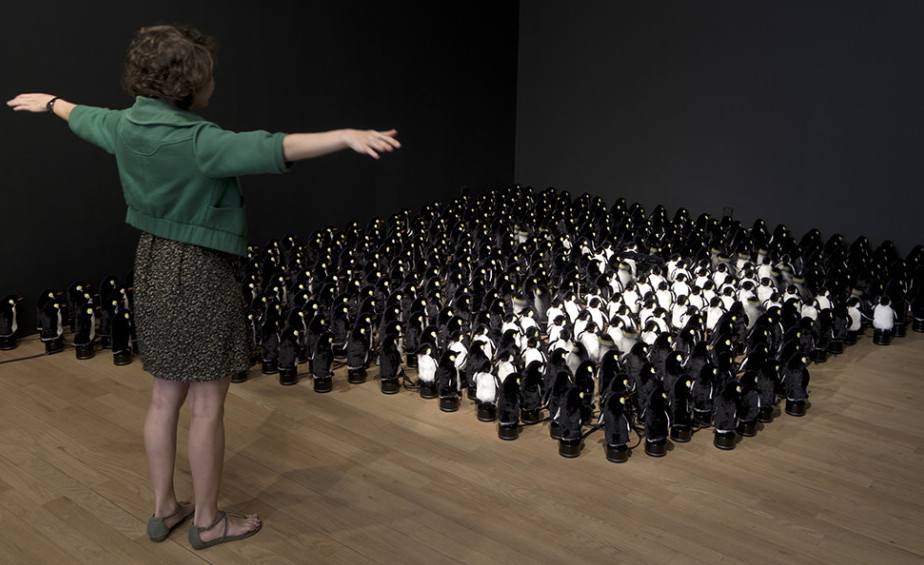
The artist and associate professor at NYU’s ITP program has been creating his digital “mirrors” since 1997, but it wasn’t until 2015 that he got wacky with the materials. The interactive sculptures use a camera to track a viewer’s movement and then transmit it through a complex network to be mimicked in a physical material, whether that be wood panels or, in this case, 450 robot penguins strung together on Bitforms gallery’s floor. The result is a bizarre reflection of the viewer, which removes the intimate details present in a traditional mirror. The end result is a piece of art that touches on the perception of self as well as the role of the viewer in art.
Laurie Simmons’ “Doll Girl” Portrait Photography
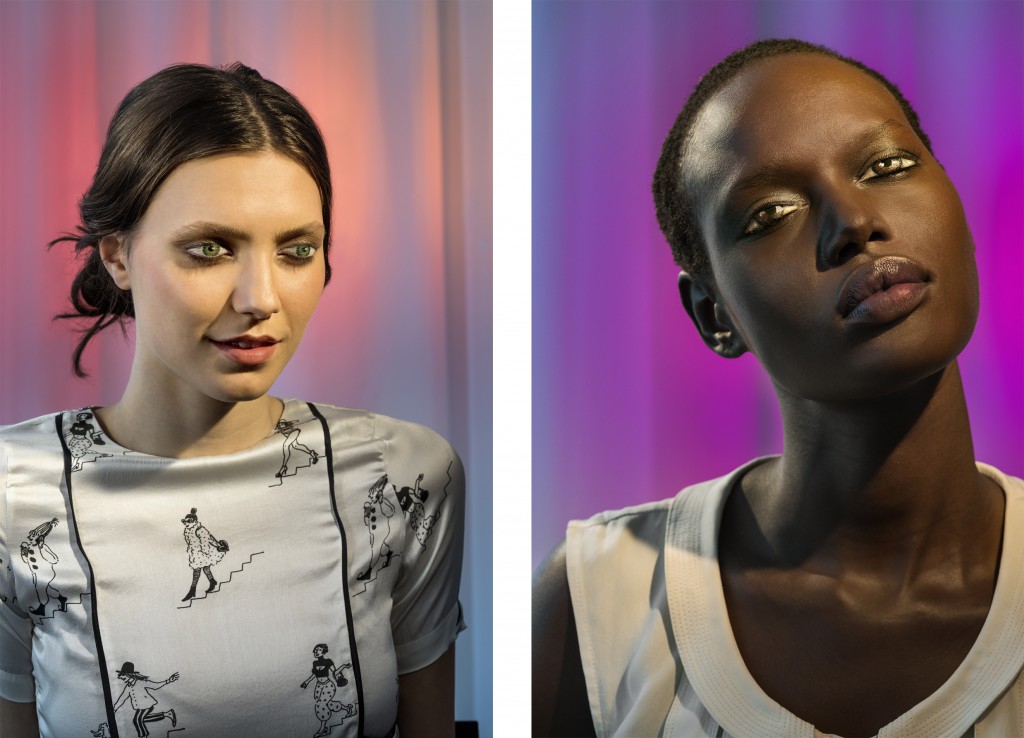
From afar, one of the portraits from Laurie Simmons’ How We See exhibition at the Jewish Museum may seem to be just a slightly creepy photograph. However, upon closer look, viewers can see that the models in each photograph actually have hyperrealistic eyes painted onto their closed eyelids. Portraits like the above Ajak (Violet) were inspired by Simmons discovery of the culture of internet “Doll Girls”. These women have extreme plastic surgery and employ makeup tactics to appear like Barbie dolls and anime characters. Through these photos, Simmons sought to address major issues like the unrealistic standards of female beauty and the false construction of self via social media and the internet (is anyone surprised she’s Lena Dunham’s mom?).
Oliver Jeffers’ Disappearing Portraits

At this year’s SPRING/BREAK Art Show, Oliver Jeffers held a private performance of one of his Dipped Paintings. In this work, Jeffers carefully renders paintings and then gathers a small group of people to watch him dip the portraits in paint, completely obscuring the portrait up to the subject’s eyes. He then interviews the few witnesses of the portrait, creating the only memory of the work in existence (all paintings are done in secrecy with a serious no photography policy). He does so to explore concepts of loss, memory, and the effect storytelling has on how history is remembered. It also touches upon a theory of quantum physics, which explains that there are forces outside of our consciousness that affect the outcome of all things.
Faith Holland’s Cum Shot Paintings

This particular series is especially interesting because of how our opinion shifted once we saw the paintings in person displayed at Transfer Gallery’s booth at the Untitled Art Fair during Basel (as opposed to prematurely judging the concept). Essentially, Faith Holland did a series of digital paintings where she used images of cum shots collected from popular porn sites to then create a collage of pleasure. She then took to the internet to ask for anonymous submissions. The final result makes for an interesting comparison between fabricated sexuality and reality. The paintings that use the submissions include a lot more body hair, and less err…cinematic quantities. The concept may be a bit crude to some, but it provides interesting insight into the way in which the internet is shaping modern sexuality.
Daniel Steegmann Mangrané’s Oculus Rift Journey to the Jungle
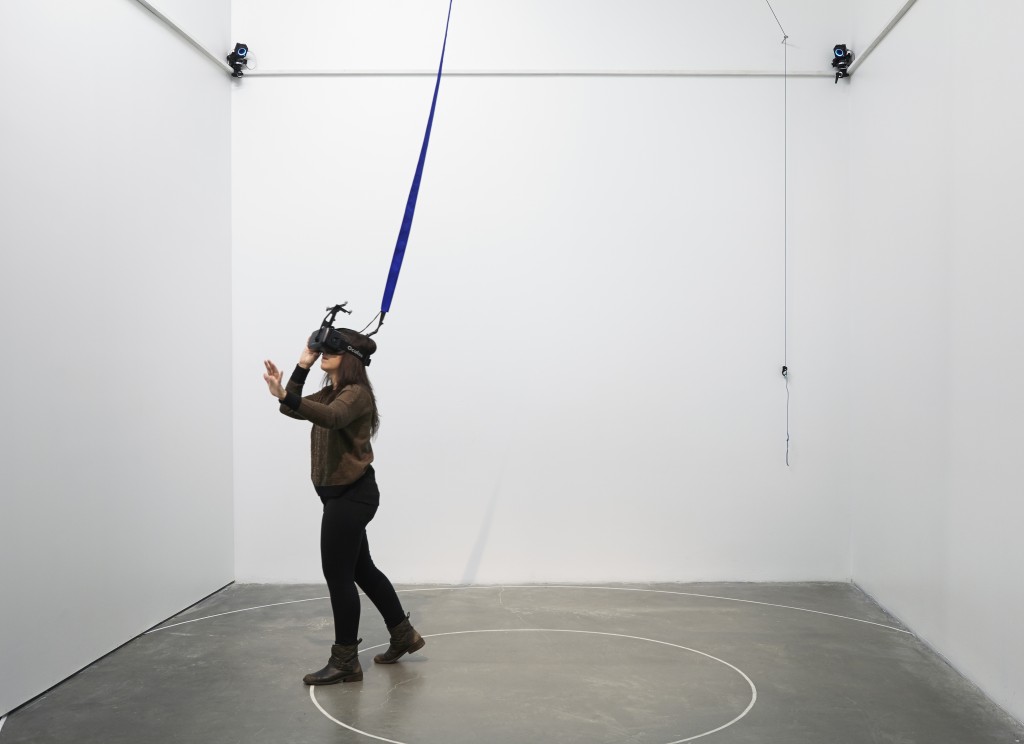
Virtual reality based art had a moment in 2015, and there’s only more to come. Though there are many to note, Daniel Steegman Mangrane’s occulus rift piece Phantom at the New Museum’s Trienniel stands out. Here the artist worked with ScanLAB Projects to generate highly detailed 3D scans of the Mata Atlântica rainforest in Brazil. He then utilized OptiTrack motion capture technology and virtual reality headsets to transport viewers to the rapidly disappearing rainforest floor. This piece is particularly compelling because of the degree of full immersion – viewers can manipulate and interact with their surroundings in a realistic way that other artists have yet to master. It is not only a fascinating glimpse into the future of technology, but also brings up the issue of human race’s destruction of nature.
Universal Everything’s Projections on the Sydney Opera House
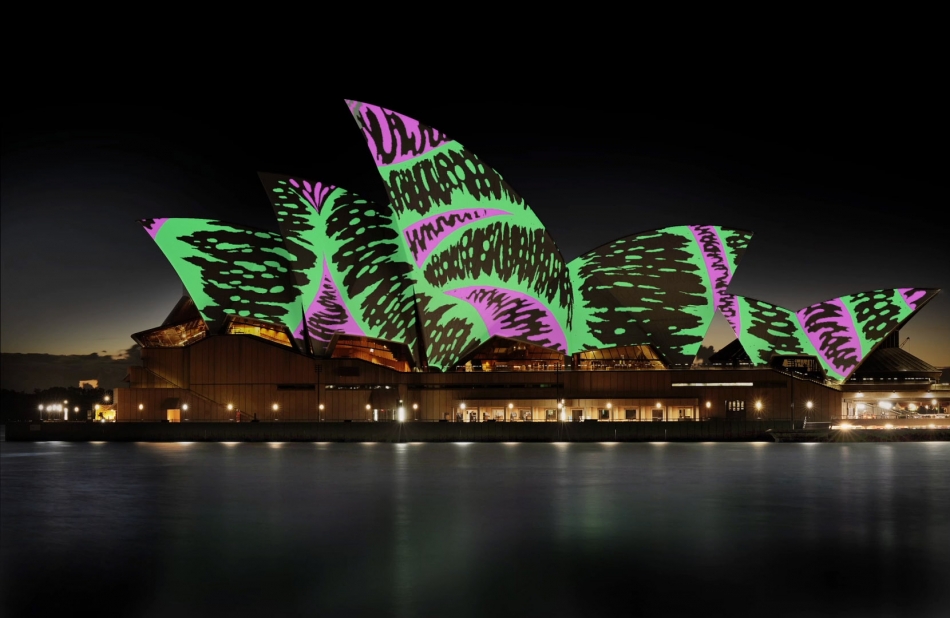
File this under the “cool to look at” category of fascinating. The creative agency Universal Everything commissioned 22 of the world’s top creatives to execute one of the largest scale animations we’ve ever seen. The grand projection ran on a 15 minute loop and features a beautiful array of artistic styles and narratives. Seriously though, how do you even begin to tackle the logistics needed for a projection that huge?
Mark Bradford’s Mapped HIV Painting
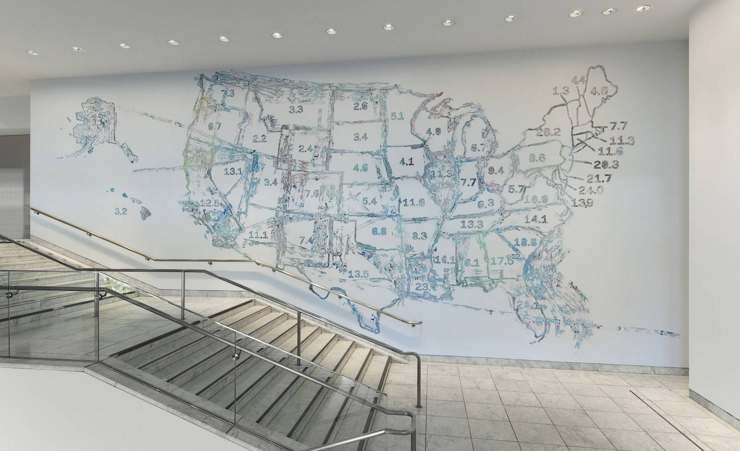
In 2015, Mark Bradford had a groundbreaking solo show at Hammer Museum in LA. The majority of the large paintings are inspired by microscope slides of the AIDs virus, but it’s the large work Finding Barry from the Scorched Earth exhibit that was particularly thought provoking. The work uses national data that quantifies the number of HIV infections in each state, which Bradford has then purposed into a wall-sized map of the United States. The overall effect is a haunting visual expression of the widespread tragedy that is the AIDS epidemic. Viewers are forced to consider the millions of people infected in their own state, while also comparing it with country-wide statistics and pondering the effect of population density, rural vs. metropolitan cities, and other lifestyle factors in the rates of infection.
Federico Solmi’s Animated Paintings

Walking into Federico Solmi’s exhibition at Postmasters was one of the most entertaining experiences of the year. His satirical paintings feature animated historical leaders twitching and dancing to their own beat around the room. The artist paints various scenes per work and digitally projects the paintings over meticulously crafted 3D rendered figures. In the painting The Waltz, Solmi has many of history’s most revered leaders engaging in cocktail chatter and fluttering about a ballroom. The overall effect is hilarious and a completely unique artwork that showcases an innovative use of technology. Solmi also seeks to brings forth questions about how we view tend to cast a favorable light on some of history’s most cruel leaders.
KATSU’s Graffiti Drone Artwork

Okay, so KATSU’s graffiti drone work may not be the elevated artistic craftsmanship that you would typically applaud, but the concept is groundbreaking. Earlier this year, KATSU took his drone to the streets and executed the first ever documented case of drone graffiti. It just happened to be across the face of a Kardashian/Jenner. Government use and regulation of drones is an increasingly hot topic and no doubt artists using drones to install their work is inevitable. As the technology evolves, so will the artistic uses of the device.
Like this article? Check out a year’s worth of exclusive artist interviews, and highlights of artists that caught our eye throughout 2015.


